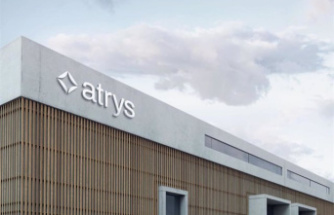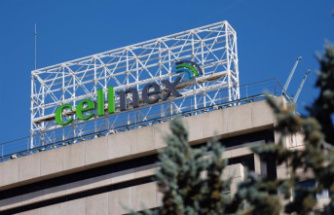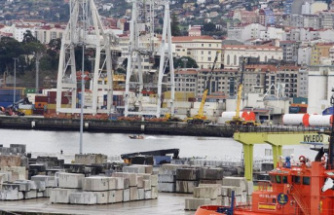At a time of protests in the street and civic unrest in response to recent presidential actions, a show of and about African American art brings with it certain expectations. "Constructing Identity: Petrucci Family Foundation Collection of African American Art," which opened at the Portland Art Museum on Jan. 28 and runs through June 18, confounds those expectations.
Visitors hoping to see vibrant activist art will find it, but only by looking closely and reading carefully. Those coming for a historical overview of African American art will find that, too, but it's nearly buried in the show's meandering arrangement. For those looking for confrontational works that question assumptions and positions on race, they're here, but liberally interspersed with many quieter, more mundane works. And for those wanting an introduction to the works of significant African American artists, while a laudable number of these artists are included in the show, the pieces aren't representative of the work that's built their reputations.
It's a grand gesture that falls short. With more than 100 works by nearly 80 artists and including paintings, sculptures, prints, mixed-media works and photographs, the higher aspirations of the show get bogged down by its broad, overlapping themes and by the sheer volume of its material.
The exhibition features a range of artists from the late 19th century to the present. Recognizable art world names appear: Kara Walker, Romare Bearden, John Biggers, Mickalene Thomas, Faith Ringgold - even Chris Ofili, never mind that he's British. The show also presents an impressive number of artists who are women and a sampling of artists from the Pacific Northwest, such as Portland painter Arvie Smith and Seattle mixed-media artist Marita Dingus.
All of the works come from the private collection of East Coast developer Jim Petrucci and were selected by guest curator Berrisford Boothe, who also helped shape the Petrucci collection. Boothe, a practicing artist and a professor of art at Lehigh University, has constructed the show with an educator's zeal, earnestly hanging it around six organizing categories: "Faces," "Abstraction," "Community," "Gender," "Spirit" and "The Land." He provides content-rich labels for all but a handful of pieces, noting the artists' backgrounds, influences and education.
Placed prominently next to the artwork, the bold, color-coded headers on the labels identify each work's grouping. While well-intentioned, the labels' graphics and placement are distracting, at times competing with the art. They're also unexpectedly verbose, with good-sized blocks of text that describe the artists rather than the artworks.
Trying to absorb all of this information becomes daunting and reveals a larger, possibly more insistent point. Boothe needs to introduce the artists and present their lineage and hierarchy because he correctly assumes many visitors will be less familiar with them. This isn't unique to a Portland audience. African American artists have historically been underrepresented in museums, their works much less known.
Visitors might thus discover a lovely pair of landscape paintings by Louis Sloan, an artist active in Philadelphia until his death in 2008. Across from these, Grafton Tyler Brown's 1891 painting of a geyser at Yellowstone National Park has a symbolist feel. Brown started his career in Pennsylvania, eventually making his way west and settling in Portland for a time. He's recognized as the first African American artist to depict the Pacific Northwest in his work.
Works by more famous artists also may surprise visitors. Mickalene Thomas is known for her large-scale collages that are often encrusted with bedazzle-like sparkle and explore feminist ideas of black identity. While her landscape here, a woodblock, silkscreen and digital print collage, is one of the larger pieces in the show, it's rather subdued. The work on display by Romare Bearden, who is best known for his intricate collages depicting urban scenes, is a delightful late-career tapestry. And Faith Ringgold, known for her narrative quilts, is represented by a grisly serigraph printed in candy-colored pastels.
Boothe is working with a lot of words, art and ideas, and that hinders the show. We're left mired in a surfeit of words when the images should largely speak for themselves. By superimposing categories that cross both style and subject, Boothe also obfuscates the greater meaning he's trying to impart from the work of these artists, famous and less so. But the effort isn't unimportant.
The art world superstar Kehinde Wiley, whose paintings place African Americans centrally in recreated works by the Old Masters, observed that when he was a child, seeing a painting in the Los Angeles County Art Museum by another African American artist, Kerry James Marshall, caused him to think about the absence of images of black people in museums.
"There was something absolutely heroic and fascinating about being able to feel a certain relationship to the institution and the fact that these people happen to look like me on some level," Wiley wrote on his website.
Ultimately "Constructing Identity" isn't a corrective to the conundrum that there are few images of African Americans in museums and even fewer images made by African Americans. That may be asking too much of any museum show, certainly this one. However, the exhibition provides a wealth of visual material and the unfortunately rare opportunity to see faces of color in a museum.
--Briana Miller, for The Oregonian/OregonLIve
***
"Constructing Identity: Petrucci Family Foundation Collection of African American Art"
Where: Portland Art Museum, 1219 S.W. Park Ave.
When: 10 a.m.-5 p.m. Tuesday, Wednesday, Saturday, Sunday; 10 a.m.-8 p.m. Thursday-Friday, through June 18
Admission: $20 adults, $17 college students and seniors 62 and older, free for children 17 and younger; portlandartmuseum.org or 503-226-2811
Our editors found this article on this site using Google and regenerated it for our readers.













